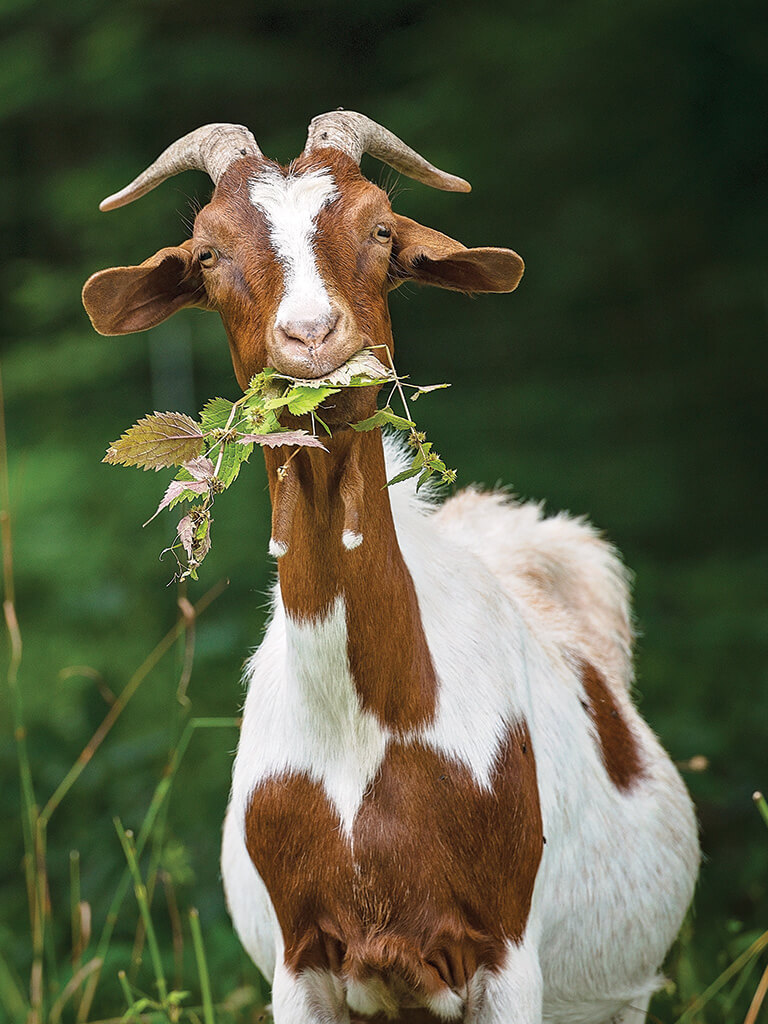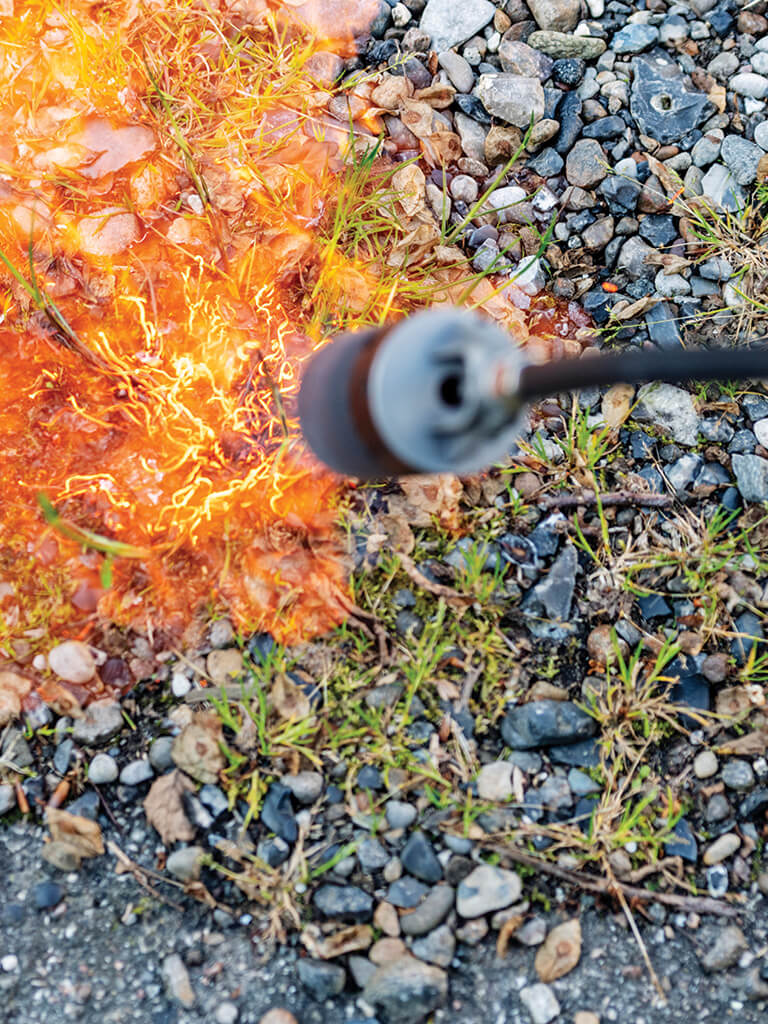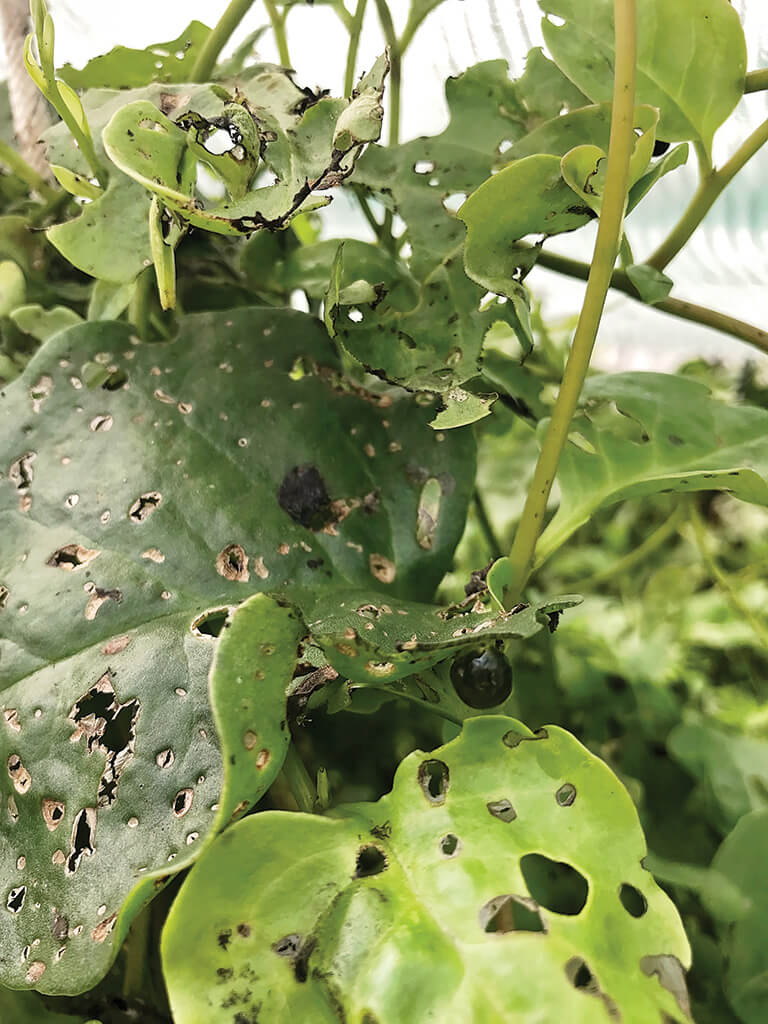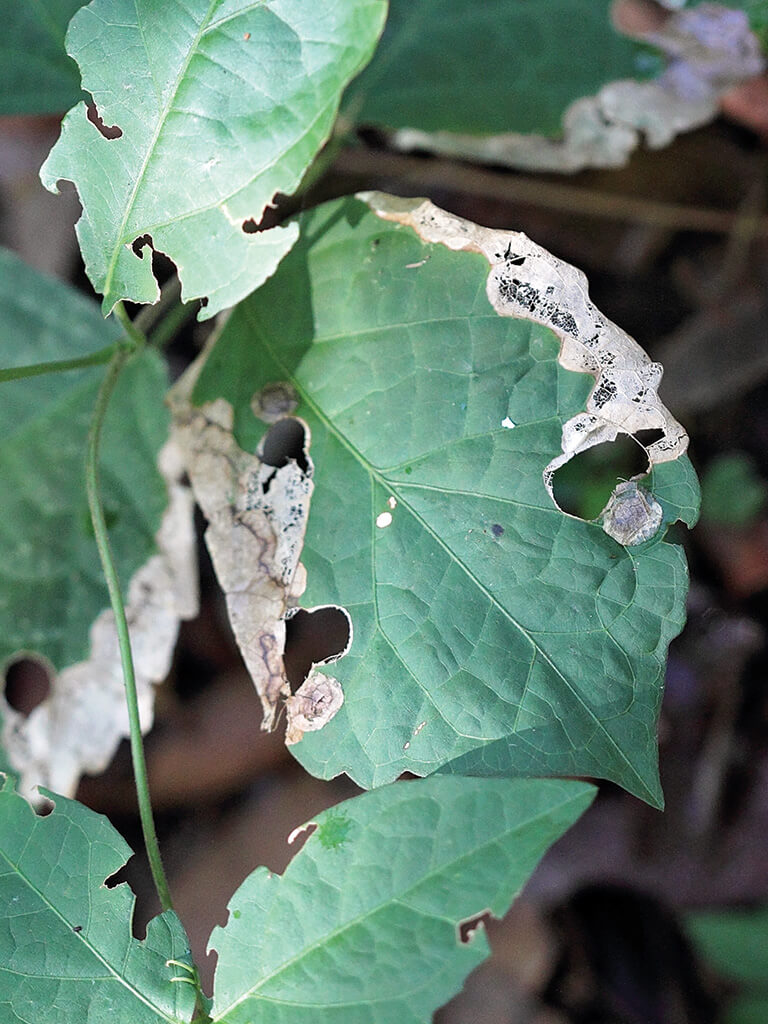Some landholders choose to manage weeds without using herbicides due to concerns around health, chemical resistance in plants, pollution and toxicity to non-target organisms. Non-chemical methods of weed control offer options for landholders. However, they are generally less effective and potentially more expensive than using herbicide. Arguably, non-chemical methods are not at all viable for treating woody weeds, vigorous invasive vines, weeds with tap roots or tubers and large/old weeds.
If you are considering the use of natural weed control methods, we suggest developing a weed management plan that integrates multiple management strategies. Your Land for Wildlife Officer can assist you with this. You can read more about how to develop a weed management plan or weed management methods in Notes EW1 and EW2 of the Land for Wildlife technical notes.
This article explores some alternatives to traditional herbicides.
Ground Covers
Ground covers are designed to inhibit weed germination, block sunlight and exert physical pressure on emerging weed seedlings. Examples include organic plant-based mulches, paper, cardboard, newspaper, cloth, fabrics, carpets, weed mat and polyethylene sheets. This method of weed control is not be suitable for areas that have a good native seed bank where natural regeneration can occur.
Pros: Beneficial on sites that have a low natural regeneration capacity (highly disturbed sites); prevents soil hydrophobia; regulates soil temperature; retains soil moisture; can prevent soil erosion.
Cons: Installing near waterways/streams can lead to ground covers ending up in the waterway during high rainfall events; does not allow for natural regeneration; high soil moisture and residue levels may also increase incidence of disease; can be costly; is not a practical option over large areas, and plastic covers can cause long-term pollution.

Crash grazing
Crash grazing is the use of domesticated animals such as goats, cattle, sheep or llamas to minimise weed biomass and increase the effectiveness of weed management. Goats consume a variety of plants and can suppress a wide range of weeds.
Pros: Crash grazing can significantly suppresses weed quantities and allow access to difficult areas; cost effective method; complements existing land uses for some landholders; fuel hazard reduction.
Cons: Weed seed can survive the gastro-intestinal tract of some livestock; weed seeds can stick to animal’s fur and be transported to other areas; will not eradicate the weed species; must be used with other strategies; does not work for all weed species; grazing animals can increase soil erosion, compact soil and increase nutrient loads in waterways; non-selective (may impact non-target species) especially in dry conditions where preferred fodder is scarce, or where species such as goats may have a preference for non-target species; horses may ringbark trees.
Organic Herbicides
Organic herbicides (e.g. rubbing alcohol, dish soap, white vinegar, salt, lemon juice, botanical oils) are non-selective, foliar-applied herbicides that cause plant death or growth suppression. They may be effective treatments for herbaceous weeds, fresh shoots, and young growth. For larger weeds, cut them and spray the regrowth with the organic herbicide.
Pros: Home remedies are cheap and practical at a small scale; biodegradable; reduce the risk to human health.
Cons: Organic herbicides are less effective, more expensive, and more labour intensive than chemical control, particularly with larger weeds, plants with runners, rhizomes, or tap roots and woody weeds; can kill arthropods; potential to change the pH and salinity of the soil; impractical at a large scale.
 Mechanical Removal
Mechanical Removal
Mechanic removal uses machines, tools or person power to physically remove, reduce and suppress weeds. Hand weeding is most effective against annual and biennial weeds when the entire root system is removed.
Pros: Most effective when utilised prior to weeds going to seed; no chemical output into the environment; depletes root reserves after repeated cutting; effective when used with other strategies; can be very cost effective.
Cons: Can stimulate further weed emergence; potential to cause erosion particularly in areas near/around a stream or on dispersive soils; broad-scale clearing is not permitted in some areas (e.g. some watercourses); the use of machinery (e.g. tractors) to undertake mechanical removal can lead to destruction of non-target species; risk of seed spread if undertaken after the weeds have seeded; some methods of mechanical removal are costly; need safe access to the site (e.g. cannot work when the soil moisture is too high).
 Heat treatments
Heat treatments
Heat treatments include high energy light, boiling water, steam, fire, flame weeding and hot foam. Extreme heat can destroy plant cells and result in the death of the plant. Some heat treatment methods (e.g. steam, flame weeding) are useful where conservation or health considerations are high (e.g. near waterways) and weed density is low. Heat treatment methods are most effective on young annual weeds and least effective on older perennial weeds.
Pros: No chemicals; can be an economical and time-effective strategy, appropriate use of fire (ecological and Indigenous cultural burns) can encourage natural regeneration.
Cons: Can be dangerous to people and property; not selective; can require expensive equipment; should not be used in fire-sensitive ecosystems.
Biological Agents
Biological agents include deliberately introduced exotic insects, mites, rusts, fungi or other pathogens that have undergone rigorous biological control testing in laboratories. They are released into the environment to control specific weed species. Landholders can purchase some biocontrol agents from providers such as Gympie District Landcare.
Pros: Low labour input for landholders; can be a very cost effective; does not introduce any chemicals into the environment that may have adverse effects on ecosystems; can be very successful; self-perpetuating and self-regulating as biological control agent becomes integrated into the ecosystem; good for inaccessible areas; useful in sensitive aquatic areas.
Cons: Large input costs needed from government and research facilities; can have non-target impacts that can have economic and environmental ramifications; extensive development and establishment phases; does not eradicate weeds, but can be used in combination with other management strategies; successful programs may take more than 10 years to be effective; success depends on perpetuation and survival of the pathogen; limited stock availability of biological control agents.


References & Further Reading
www.dpi.nsw.gov.au/biosecurity/weeds/weed-control/general-management/integrated-weed-management
www.environment.gov.au/biodiversity/invasive/weeds/management/
Article by Danielle Andlemac
Land for Wildlife Officer
Ipswich City Council
Uncredited photos supplied by Ipswich City Council
View Full Newsletter

Very comprehensive thanks.
I need to control 1 ash tree that has established itself in our sewer in Adelaide, beside a concrete driveway.
10cm diameter stump has resprouted.
Adjacent to a prized camellia that cannot be harmed.
We are reluctant to use herbicides
Saturated steam weeding is a very good option from Weedtechnics https://www.weedtechnics.com/.